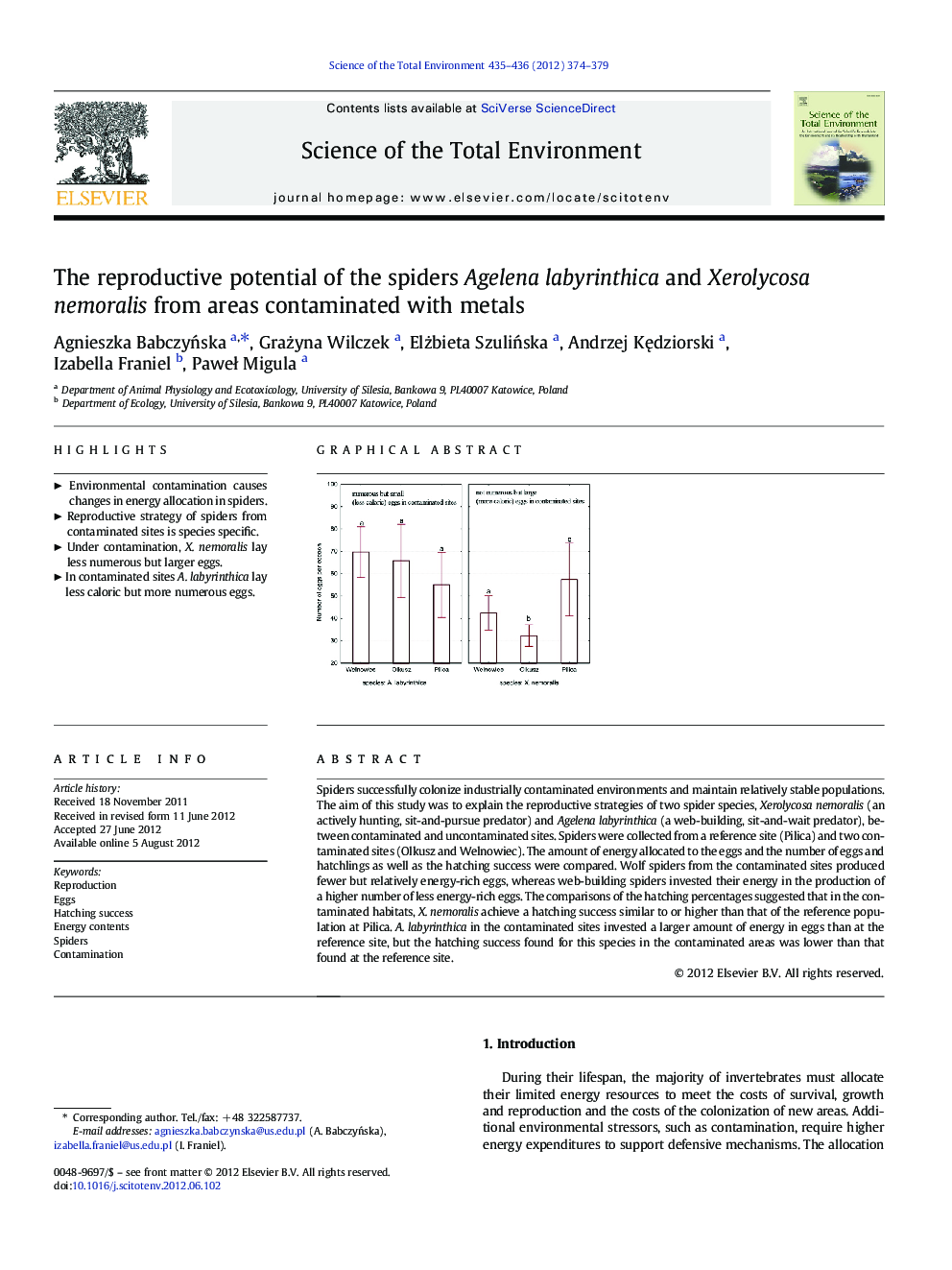| Article ID | Journal | Published Year | Pages | File Type |
|---|---|---|---|---|
| 4429260 | Science of The Total Environment | 2012 | 6 Pages |
Spiders successfully colonize industrially contaminated environments and maintain relatively stable populations. The aim of this study was to explain the reproductive strategies of two spider species, Xerolycosa nemoralis (an actively hunting, sit-and-pursue predator) and Agelena labyrinthica (a web-building, sit-and-wait predator), between contaminated and uncontaminated sites. Spiders were collected from a reference site (Pilica) and two contaminated sites (Olkusz and Welnowiec). The amount of energy allocated to the eggs and the number of eggs and hatchlings as well as the hatching success were compared. Wolf spiders from the contaminated sites produced fewer but relatively energy-rich eggs, whereas web-building spiders invested their energy in the production of a higher number of less energy-rich eggs. The comparisons of the hatching percentages suggested that in the contaminated habitats, X. nemoralis achieve a hatching success similar to or higher than that of the reference population at Pilica. A. labyrinthica in the contaminated sites invested a larger amount of energy in eggs than at the reference site, but the hatching success found for this species in the contaminated areas was lower than that found at the reference site.
Graphical abstractFigure optionsDownload full-size imageDownload as PowerPoint slideHighlights► Environmental contamination causes changes in energy allocation in spiders. ► Reproductive strategy of spiders from contaminated sites is species specific. ► Under contamination, X. nemoralis lay less numerous but larger eggs. ► In contaminated sites A. labyrinthica lay less caloric but more numerous eggs.
